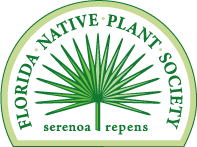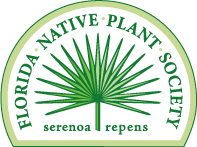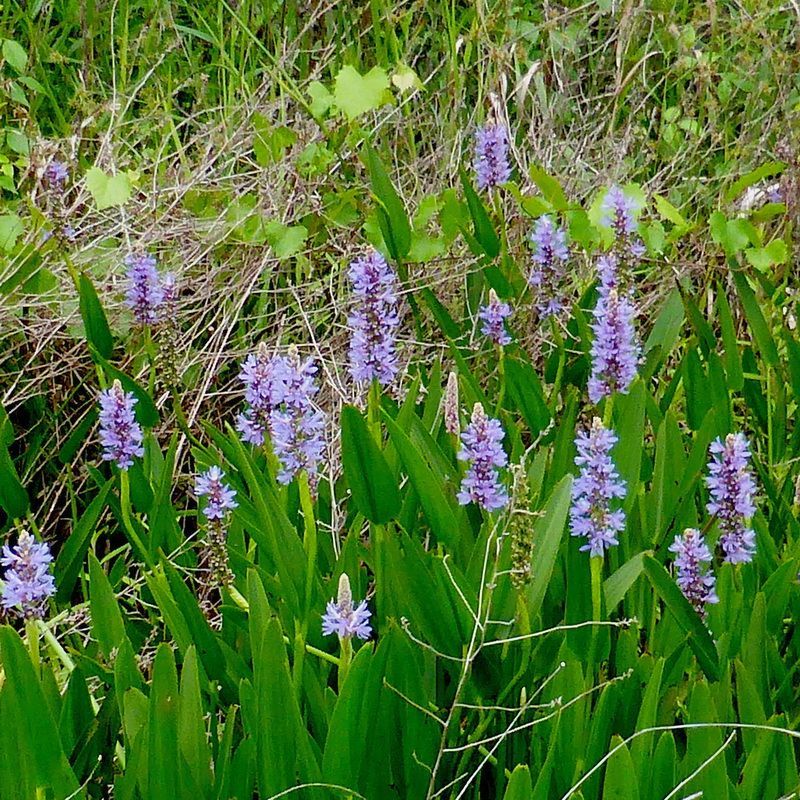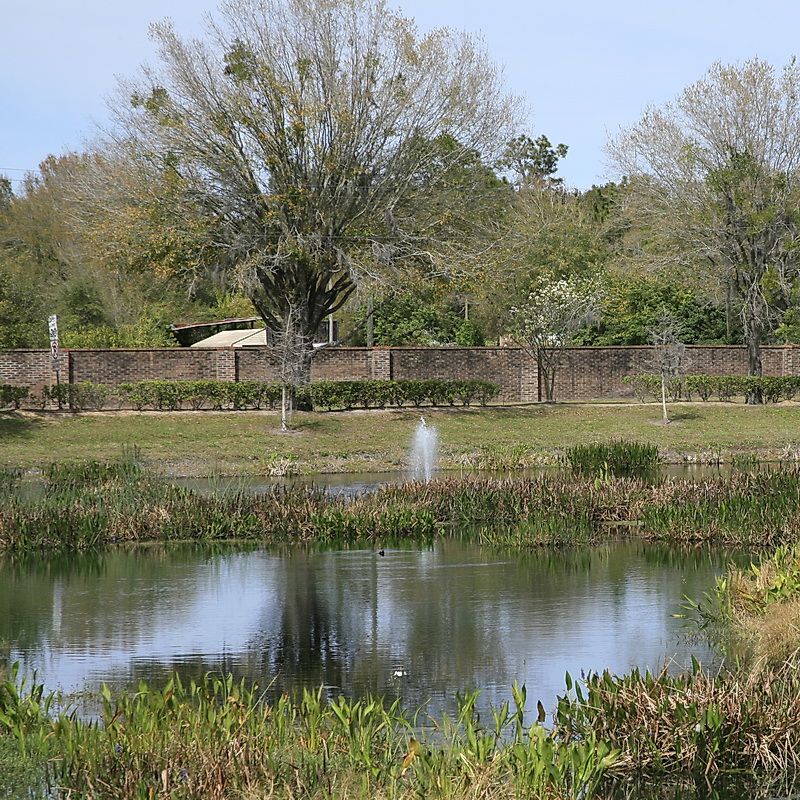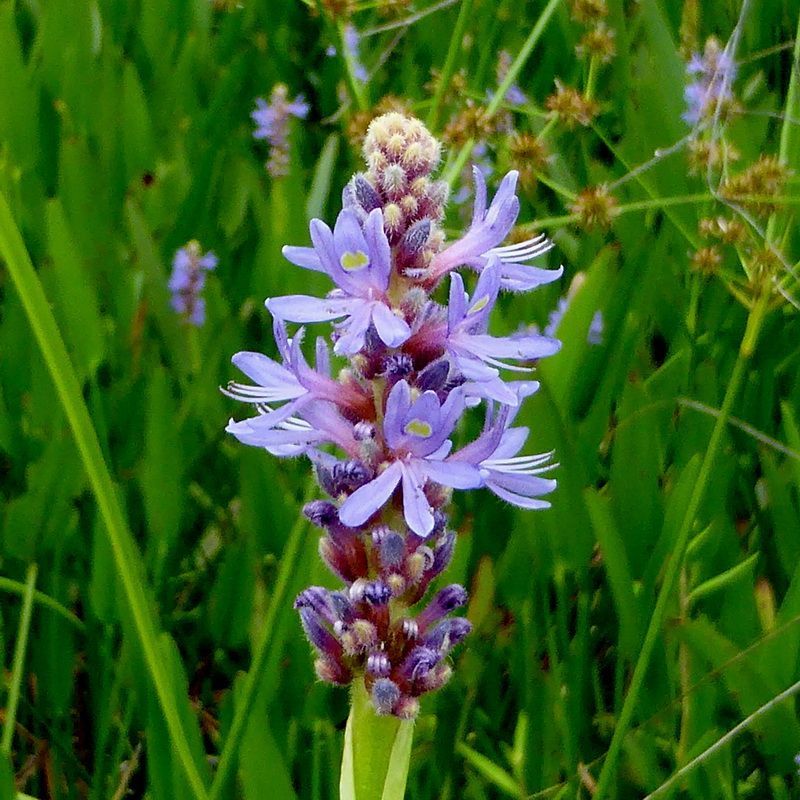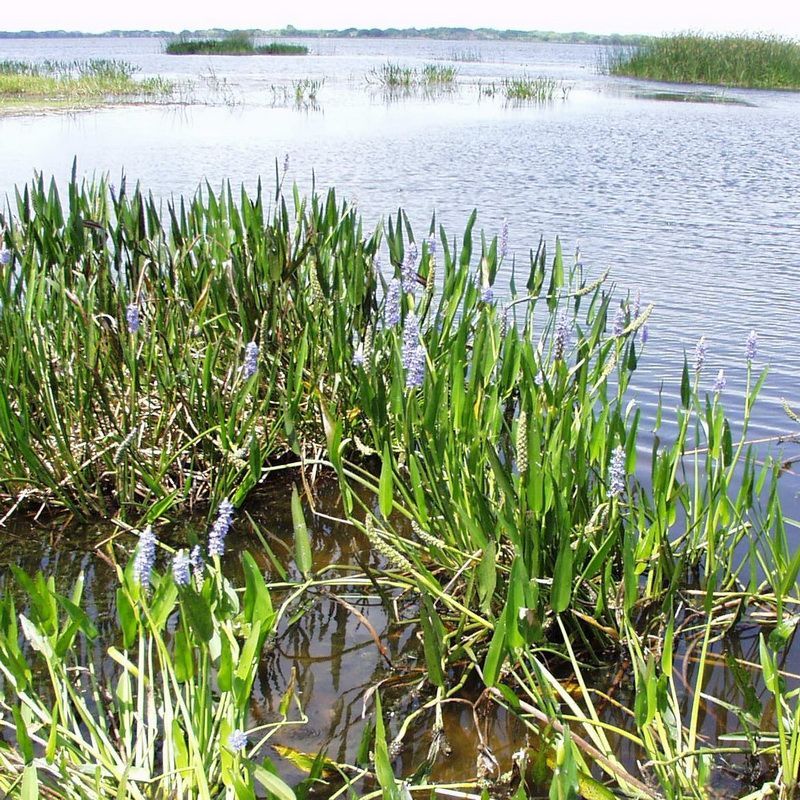FNPS Plant Database
Pontederia cordata
Nomenclature
Common Name:
Synonym(s):
Genus species:
Family:
Pontederiaceae
Plant Specifics
Form:
Size:
Life Span:
Long-lived perennial
Flower Color:
Fruit Color:
Phenology:
Noted For:
Landscaping
Recommended Uses:
Considerations:
Availability:
Propagation:
Light:
Moisture Tolerance:
Always Flooded---------------------------------Extremely Dry
■■■■■■■■■□□□□□□□□□□□□□□□□□□□□□□□□□□□□□□□□□
1 -to- Stays wet
Salt Water Flooding Tolerance:
Unknown
Salt Spray/Salty Soil Tolerance:
Low/no tolerance of salty wind or direct salt spray
Soil or Other Substrate:
Sand, Loam, Organic
Soil pH:
Suitable to Grow In:
8A,8B,9A,9B,10A,10B

USDA zones are based on the average annual extreme minimum winter temperature.
Don't know your zone? Click here to search by zip code.
Ecology
Wildlife:
Attracts butterflies and bees. Documented bee visitors include Hylaeus schwarzi, Dianthidiuin floridiense, Ceratina dupla floridaiza, Apis inellifera , and Xylocopa inicaizs (Deyrup et al. 2002).
Ducks love the plants and a risk is that they might devour an entire planting.
Native Habitats:
Natural Range in Florida:
Visit the USF Libraries Atlas of Florida Plants
Comments:
Ethnobotany:
General Comments:
The natural range in Florida appears to include the entire mainland and exclude the Florida keys. Herbarium specimen in the Florida Keys was in a man-made pond leading to the suspicion that the plant was brought in by man and that the keys are not within the natural range of the species. The counties where the plant has not been documented are well within the range of the species and have ample habitats to support this common species (this author has seen it in most of those counties).
Citations:
Deyrup, Mark; Jayanthi Edirisinghe, and Beth Norden. 2002. The diversity and floral hosts of bees at the Archbold Biological Station, Florida (Hymenoptera: Apoidea). Insecta Mundi. 544.
https://digitalcommons.unl.edu/insectamundi/544.
Florida Wildflower Foundation. https://flawildflowers.org/flower-friday-pontederia-cordata/
Hammer, Roger. 2015. Attracting hummingbirds and butterflies in tropical Florida. University Presses of Florida.
Huegel, Craig, N. 2012. Native wildflowers and other ground covers for Florida landscapes. University Press of Florida, Gainesville, FL.
Missouri Botanical Garden. http://www.missouribotanicalgarden.org/PlantFinder/PlantFinderDetails.aspx?kempercode=a428.
Nelson, Gil. 2003. Florida's Best Landscape Plants. Association of Florida Native Nurseries.
Tras, Pamela. 2001. Gardening for Florida's butterflies. Great Outdoors Publishing, St. Petersburg, FL.
Wunderlin, R. P., B. F. Hansen, A. R. Franck, and F. B. Essig. 2021. Atlas of Florida Plants ( https://florida.plantatlas.usf.edu/ ). Institute for Systematic Botany, University of South Florida, Tampa.
